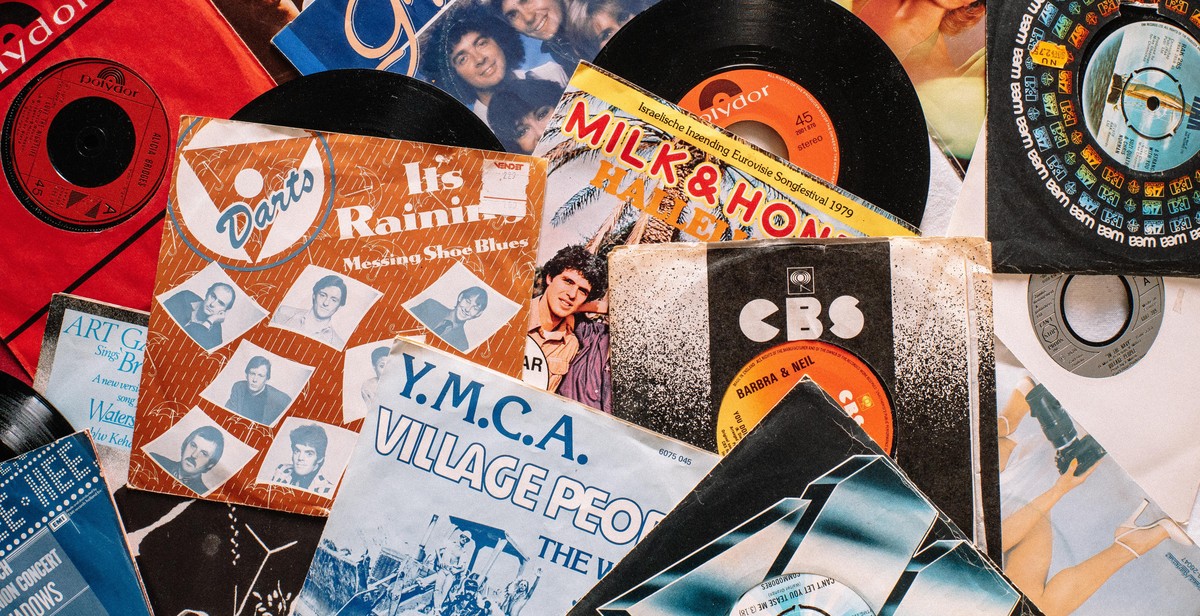How to Write and Compose Your Own Song
Writing and composing your own song can be an incredibly rewarding and fulfilling experience. Whether you’re an aspiring musician or just looking to express yourself creatively, the process of creating your own music is a unique and personal journey.
Why Write Your Own Song?
Writing your own song allows you to express yourself in a way that is completely your own. You can create something that is unique to your own experiences, thoughts, and emotions. It can also be a way to connect with others and share your message with the world.
In addition, writing your own music can be a great way to develop your skills as a musician. It can help you hone your songwriting abilities, as well as improve your understanding of music theory, melody, and rhythm.
The Songwriting Process
The songwriting process can vary from person to person, but generally involves several key steps. These may include:
- Brainstorming ideas
- Developing a concept or theme
- Writing lyrics
- Creating a melody
- Arranging the song
- Rehearsing and refining
While these steps may seem daunting, they can be broken down into manageable pieces. With practice and persistence, anyone can learn to write and compose their own music.

Step 1: Choose Your Inspiration
Before you start writing your own song, you need to choose your inspiration. This means selecting a genre and picking a theme that will guide your songwriting process.
Selecting a Genre
The first step in choosing your inspiration is selecting a genre. This will help you to define the style and structure of your song. There are many different genres to choose from, including pop, rock, country, hip-hop, R&B, and more. It’s important to choose a genre that you feel comfortable with and that suits your style as a songwriter.
One way to choose a genre is to think about the type of music that you enjoy listening to. If you’re a fan of pop music, for example, you might want to write a pop song. If you prefer country music, you might want to write a country song. Alternatively, you could experiment with different genres until you find one that you feel comfortable with.
Picking a Theme
Once you’ve selected a genre, the next step is to pick a theme. This will help you to define the subject matter of your song. There are many different themes to choose from, including love, heartbreak, happiness, sadness, and more. It’s important to choose a theme that resonates with you and that you feel passionate about.
One way to pick a theme is to think about your own personal experiences. What are the things that you’ve gone through in your life? What are the emotions that you’ve felt? These can be great sources of inspiration for your songwriting. Alternatively, you could choose a theme that is universal and that many people can relate to.
- Choose a genre that you feel comfortable with and that suits your style as a songwriter.
- Experiment with different genres until you find one that you feel comfortable with.
- Pick a theme that resonates with you and that you feel passionate about.
- Think about your own personal experiences as sources of inspiration for your songwriting.
- Choose a theme that is universal and that many people can relate to.
| Do | Don’t |
|---|---|
| Choose a genre that suits your style as a songwriter. | Choose a genre just because it’s popular. |
| Pick a theme that resonates with you and that you feel passionate about. | Pick a theme just because it’s trendy. |
| Think about your own personal experiences as sources of inspiration. | Copy someone else’s songwriting style. |

Step 2: Create the Melody
Once you have established the chord progression for your song, it’s time to create a melody that will fit perfectly with the chords. The melody is the heart of your song, and it’s what your listeners will remember the most. Here are some tips on how to create a great melody:
Playing with Chords
One of the easiest ways to create a melody is to play around with the chords you’ve already established. Start by playing the chords in different orders and rhythms until you find a sequence that sounds good to you. Once you have a basic melody, you can start tweaking it to make it more interesting.
You can also try adding passing notes between chords to create a more complex melody. Passing notes are notes that are not part of the chords but are used to create a smoother transition between them. Experiment with different passing notes until you find the ones that work best for your song.
Working with Rhythm
Rhythm is an essential part of any melody. It’s what gives your song its groove and helps it flow smoothly. When creating your melody, pay attention to the rhythm of the chords and try to match your melody to it. You can also experiment with different rhythms to create a more interesting melody.
Another way to work with rhythm is to add syncopation to your melody. Syncopation is when you accentuate the off-beat notes, creating a more complex rhythm. This can add a lot of interest and energy to your melody.
Summary
Creating a melody is an essential part of writing a song. By playing with chords and working with rhythm, you can create a melody that fits perfectly with your chord progression and creates a memorable and engaging song.

Step 3: Write the Lyrics
Once you have a solid melody and chord progression, it’s time to start writing the lyrics. This is where you get to tell your story and convey your message through words.
Brainstorming Ideas
The first step in writing lyrics is to brainstorm ideas. You can start by jotting down anything that comes to mind. This could be a phrase, a word, a feeling, or a story. Don’t worry about making it perfect at this stage, just focus on getting your ideas down on paper.
Once you have a list of ideas, start to think about how they fit together. Look for common themes or emotions that you want to convey in your song. This will help you to craft a cohesive story that resonates with your audience.
Crafting the Story
With your ideas in hand, it’s time to start crafting the story of your song. This is where you get to flesh out your ideas and turn them into a narrative.
Start by thinking about the structure of your song. Most songs follow a verse-chorus-verse-chorus-bridge-chorus structure, but you can mix it up if you want. Once you have a structure in mind, start to fill in the lyrics. Focus on creating a strong hook for your chorus, as this is what will stick in your listener’s head.
As you write your lyrics, think about the emotions you want to convey. Use descriptive language to paint a picture for your listener and make them feel what you’re feeling. Don’t be afraid to be vulnerable and share your own experiences, as this is what will make your song unique and relatable.
Once you have your lyrics written, go back and revise them. Look for any lines that feel clunky or don’t flow well with the melody. Make sure your lyrics fit the overall theme and message of your song.
Remember, writing lyrics takes practice. Don’t be discouraged if your first attempt isn’t perfect. Keep writing and revising until you have a song that you’re proud of.

Step 4: Arrange the Song
Now that you have written the lyrics and melody, it’s time to arrange the song. Arranging a song means organizing its different parts in a way that makes sense and sounds good. This is where you decide on the song’s structure and instrumentation.
Structuring the Song
The structure of a song refers to the way its different parts are organized. Most songs have a basic structure of verse-chorus-verse-chorus-bridge-chorus. However, you can also experiment with different structures, such as AABA or ABAB.
When structuring your song, think about the story you want to tell and how you want to convey it. Consider the emotional journey you want to take the listener on. For example, you might want to start with a slow, introspective verse and build up to a powerful, energetic chorus.
Adding Instrumentation
Once you have the basic structure of the song, it’s time to think about instrumentation. This includes the instruments you want to use and how they will be arranged in the song.
Start by choosing the main instrument that will carry the melody. This could be a guitar, piano, or even a synthesizer. Then, think about the other instruments you want to add to create depth and texture. These could include drums, bass, strings, horns, or any other instrument that fits the style and mood of the song.
When arranging the instrumentation, think about how each instrument will contribute to the overall sound of the song. Consider the different parts of the song and how the instruments will work together to create a cohesive whole.
| Verse 1 | Chorus | Verse 2 | Chorus | Bridge | Chorus |
|---|---|---|---|---|---|
| Guitar, Bass | Guitar, Piano, Drums | Strings, Piano | Guitar, Piano, Drums | Synthesizer | Guitar, Piano, Drums |
Remember, the goal of arranging the song is to create a dynamic and engaging listening experience. Don’t be afraid to experiment and try new things until you find the perfect combination of structure and instrumentation that brings your song to life.

Step 5: Refine and Polish
After completing the initial draft of your song, it’s time to refine and polish it to make it sound even better. This step involves editing the song, rehearsing, and recording.
Editing the Song
Edit your song to make sure it flows smoothly and makes sense. Check for any grammatical errors and ensure that the lyrics match the melody. Consider rephrasing some parts of the song to make it more interesting. You can also ask for feedback from friends or other musicians to help you identify areas that need improvement.
Rehearsing
Rehearsing is an essential part of polishing your song. Practice singing and playing your instrument until you’re comfortable with the song. Experiment with different tempos and rhythms to find the perfect one that suits your song. It’s also a good idea to practice singing in front of a mirror to work on your stage presence.
Recording
Once you’ve edited and rehearsed your song, it’s time to record it. You can either record it at home using your smartphone or computer, or you can go to a professional recording studio. Make sure to use quality equipment and consider hiring a sound engineer to help you achieve the best possible sound.
- Choose a quiet and comfortable room to record in
- Use a good quality microphone and instrument cables
- Record multiple takes to choose the best one
- Consider adding additional instruments or vocal harmonies to enhance the song
Remember that refining and polishing your song takes time and effort, but the end result will be worth it. Keep practicing and experimenting until you’re satisfied with the final product.
